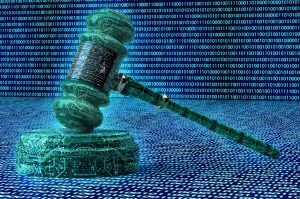2 Recent Publications For Legal Operations Professionals
Both have significance if you work in legal operations or in any segment of the legal technology field.

(Image via Getty)
Two things happened last week. They are not the most consequential things in the world, but they have significance if you work in legal operations or in any segment of legal technology for that matter.
I like to read. Some would say I’m old-fashioned because I like to read a physical book, not some swipe-a-page electronic device where the pages all seem to run together and not line up with the pages of the book. But lest I digress, this week I have two recommendations for legal ops pros to read.

Thomson Reuters' Claims Explorer: A Powerful Tool For Legal Claim Identification

First, Craig Ball released a paper on processing electronically stored information entitled Processing in E-Discovery. If you don’t know what processing ESI is, you may be reading the wrong column. I’ve written about processing before, and I was trying to point out a few best practices. Craig’s paper, however, takes a completely different approach. Craig goes into the weeds.
The paper starts with this introduction: “Talk to lawyers about e-discovery processing and you’ll likely get a blank stare suggesting no clue what you’re talking about. Why would lawyers want anything to do with something so disagreeably technical?” He’s right, you know. Most people don’t want to know how terribly wrong things can go when you’re attempting to take ESI from any number of disparate data sources and put that data into a uniform format for attorneys to search, review, and produce. Most people just want to know, as Craig points out, that the “stuff goes in and stuff comes out.”
Craig does a good, if not exhaustive, job of distinguishing between what most people consider documents and what in reality are files or, perhaps more aptly, data. You want to know about bits and bytes? This is your paper to read. Interested in encoding, dexiheximalisms (a word I made up), and the historical underpinnings of the decimal, base 10 systems, and binary ASCII sequences? This paper is for you.
But the paper is clearly for every-day e-discovery practitioners as well because Craig also digs in on the vital role of people who make decisions on how to process ESI and the tools used to perform processing. For instance, a common dilemma in processing ESI is time zone normalization. Craig suggests processing ESI to Coordinated Universal Time (UTC) or Greenwich Mean Time to avoid having the time stamp of an email sent from the EU to the US appear to precede the message it answers. And he does a great job explaining “de-NISTing,” the meaning and utility of “hash values” (or cryptographic hashing if your inner geek is interested), and de-duplication.
Sponsored

Law Firm Business Development Is More Than Relationship Building

Thomson Reuters' Claims Explorer: A Powerful Tool For Legal Claim Identification


Curbing Client And Talent Loss With Productivity Tech

Ranking The Law Firms Lawyers Love
Read the paper, but also check out Craig Ball’s blog, Musings on E-Discovery and Computer Forensics, here.
The second consequential publication I saw last week was ILTA’s 2019 Technology Survey. Why is this important, you may ask? Well, it strikes me that it’s one of the most comprehensive surveys of law firm technology leaders in the industry. This year, ILTA received responses from 537 law firms.
What’s in ILTA’s 2019 survey? Well, for the public at large, it probably won’t be very exciting, but for those who work in legal operations, you’ll find answers to questions on server operating systems, desktop systems, and the most predominate word processing applications. For infrastructure folks, there’s analysis of Dell, HP, and Cisco hardware, storage solutions, and of course, use of the cloud.
It’s interesting to me to see that after many years of advocating to move law firm and client data to the cloud, a great deal of law firm data now actually resides in the cloud. We’re not just talking marketing data. Seventy percent of firms report payroll is in the cloud; 66 percent report email security is cloud-based; and more than 30 percent report that e-discovery processes are in the cloud. Overall, 72 percent of respondents report that firm adoption of cloud-based solutions will increase in the next 12 months.
Asked about the technology or trend over the next three to five years that will bring the most change to legal technology, three-quarters of respondents said the cloud and artificial intelligence/machine learning. Still, only about one-fifth of firms claim to be using or researching the use of AI tools.
Sponsored

Luxury, Lies, And A $10 Million Embezzlement

Ranking The Law Firms Lawyers Love
ILTA’s 384-page report is remarkable for its detail, thoroughness, and the ease with which one can understand the outcomes of the survey. The Technology Survey is ILTA’s most prestigious annual publication, and it provides substantive data you can use to benchmark your organization’s technology implementations and plans. The free executive summary and the for-purchase full report are available on ILTA’s website here.

Mike Quartararo
Mike Quartararo is the President of the Association of Certified E-Discovery Specialists (ACEDS), a professional member association providing training and certification in e-discovery. He is also the author of the 2016 book Project Management in Electronic Discovery and a consultant providing e-discovery, project management and legal technology advisory and training services to law firms and Fortune 500 corporations across the globe. You can reach him via email at [email protected]. Follow him on Twitter @mikequartararo.







